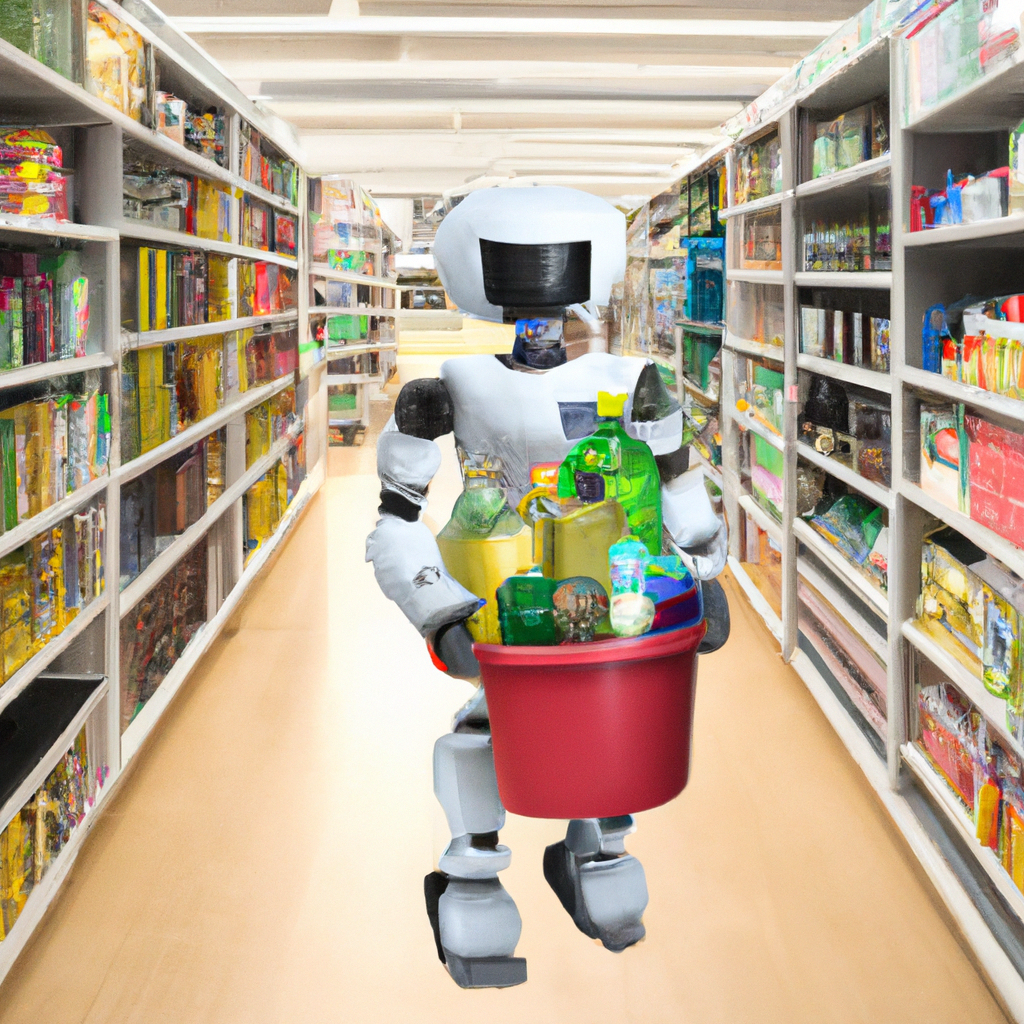When Temple & Webster, Australia’s largest pure-play online retailer of furniture and homewares announced their FY23 financial results, little attention was paid to their figures. All eyes were on their strategy, and more specifically, the AI powering their sales. The online retailer uses AI to optimise product listings, and AI-interior design to match customers’ tastes.
It’s a strategic move to increase sales and enhance customer experience. By employing AI-enhanced descriptions across more than 200,000 items, the company has seen a significant increase in add-to-carts and revenue per visit. They are also working on AI solutions for logistics and pricing, aiming to lower the overall cost of doing business. Their investment in an Israeli start-up that provides personalised mood boards, Renovai, underscores their commitment to leveraging AI for growth.
However, the implications of Temple & Webster’s AI initiatives go beyond maximising their own sales. It brings attention to a revolution in how we shop. There’s a transformation taking place in how we browse, compare, and purchase products. And the next innovation is the rise of autonomous shopping agents. Think AI-powered bots that act on behalf of human consumers, helping them shop across various retailers and providers.
History provides a guide for the future of autonomous shopping
Before supermarkets emerged, the traditional grocer was an institution that stood at the heart of local communities. You would hand your shopping list to the grocer, who would meticulously gather the items from the shelves. They acted as your agent, selecting and procuring the goods you required.
Then came the Piggly Wiggly, the first true self-service grocery store. It created a shift from the personalised service provided by local grocers to a new model where customers became their own agents, navigating the aisles and making purchasing decisions independently. It transformed the retail experience and laid the groundwork for modern supermarkets.
AI-powered bots, also known as intelligent autonomous agents, are the modern counterparts of the traditional grocer, meticulously sifting through mountains of data to fulfil the needs and wants of their human operators. We now stand at the cusp of the ‘Business to Agent’ or B2A era. We are witnessing the return of the agent, from the late 19th-century human grocer to an AI shopper of the 21st century. The shopper bots are coming, and businesses must adapt.

A new shopping era emerges
Shopping, in its many forms, can be a delightful dance. The thrill of stepping into a designer boutique, the excitement of test-driving a new car, the adventure of planning an exotic holiday — each of these experiences can be an exhilarating, theatrical event, a leisure activity in itself. The hunt, the discovery, the anticipation, and the fulfilment — these are the elements that can transform shopping into a captivating journey.
For many, shopping can be a laborious chore. Picture the anxiety of last-minute shopping for everyday items, the mundane drudgery of comparing utility prices, or even the stress of planning a holiday, compounded by the fear of making the wrong choice. These tasks can drain the joy out of shopping, turning it into an ordeal we’d rather delegate or better yet, avoid altogether.
As a new shopping era emerges, powered by autonomous agents, it promises to preserve the joy of shopping for those who revel in it and offload the task to our digital counterpart for those who find it a chore.
In this paradigm, autonomous agents are the shoppers, bearing the burden of finding the best deals, making the tough choices, and even handling the negotiation. They relieve us from the tedium, doing the work behind the scenes, based on algorithms and machine learning.
It brings us closer to the concept economists call ‘perfect competition’, where all buyers and sellers have complete and equal access to information. Autonomous agents, capable of analysing real-time market data, become the embodiment of the ‘perfectly informed’ consumer.
Transforming the purchasing decision with AI
Picture this: you’re planning a birthday dinner. In the B2A world, the autonomous agent considers your preferred cuisine, past restaurant experiences, transaction history, and physiological data like your heart rate and blood pressure – both indicators for excitement and enjoyment. It could even use computer vision to assess the potential venue’s decor, ambience and view.
In the airline industry, an autonomous agent might review prices, punctuality, in-flight meals, and even use your sleep patterns and physiological responses to predict potential jetlag. In the face of these data-driven bots, airlines would have to revise their competitive strategies.
In insurance and utilities, the AI agents might undertake forensic analysis of rates and activity, then negotiate contracts based on individual consumption patterns and risk profiles, leading to perfectly tailored policies and packages. The shopping experience is not just personalised but also efficient and hassle-free.

For the fashion industry, the shift could be even more dramatic. An autonomous agent could analyse a user’s existing wardrobe, style preferences, calendar, social media interactions, body type and even mood to make a purchase decision. We are looking at a future where everyone can be en vogue, thanks to the advice of their AI fashion agent.
At the threshold of the B2A era, the question arises: how must businesses adapt? How do brands stay within the sphere of awareness, consideration, and conversion of these bots? What should businesses do differently and what practices should they uphold?
Preparing for a new kind of customer: autonomous agents
The advent of B2A calls for businesses to prepare for a new kind of customer. They need to understand what data these agents will likely use and ensure this information is accurate, easily accessible, and relevant. They need to ensure their brand’s value proposition is compelling enough to sway both human consumers and their AI counterparts. Even in this AI-dominated environment, the power of human brand recall can drive consumers to instruct their agents to favour certain brands.
One of the most crucial shifts for marketers will be making their communications machine-readable. Traditional, human-centric marketing messages may not resonate with AI agents. Mental and physical availability will exist in an added dimension. A shift here may involve incorporating structured data into marketing content to allow AI agents to easily parse and understand key information. It could also mean optimising websites and digital platforms for machine navigation, ensuring these digital shoppers can easily understand and buy from these sites.
Given the ‘perfectly informed’ AI shopper can tap into a wealth of real-time market data, businesses will need to maintain a high level of transparency. Openly sharing pricing structures, supply chain information, or the sustainability impact of products are potential avenues to meet the AI agent’s need for data. They will also satisfy human operators who use transparency and ethical business practices to inform their purchase considerations.
The advent of AI agents may also revolutionise the concept of budgeting and change the rhythm of retail sales. With their ability to analyse historical price patterns and predict future trends, these bots can time purchases to when prices are at their lowest. This ability could disrupt traditional sales cycles, pushing businesses to rethink their pricing strategies.
For instance, retail events like end-of-season sales or Black Friday might lose their significance if AI agents distribute purchases throughout the year based on price optimisation. As a result, businesses may need to adjust their sales strategies, to focus more on real-time dynamic pricing models. For example, the bots will see the value erosion of a buy-one-get-one-free offer and take advantage of it, buying up stock and demonstrating value to its human master.
Some fundamentals remain
The shift from traditional business models to B2A might seem challenging. However, it presents a wealth of opportunities for innovation and deepening relationships with customers, even if these customers are, in fact, bots. This doesn’t mean the end of creativity in marketing. Instead, it’s the beginning of a new form of creativity that blends the technical with the innovative. Building a famous brand, delivering consistent quality, and cultivating customer trust will remain central to business success. Humans are astonishingly good at screening out unfamiliar brands. The power of human brand recall and recognition can translate into programmed preferences in bots. While autonomous agents may be doing the shopping, they are doing so based on human preferences.
While these autonomous agents do not yet exist in any simple form, the rapid rate at which AI is accelerating means it’s only a matter of months or even weeks, before they do. We must embrace the change, and adapt to harness the opportunity and stay relevant. The bots are coming, they’ll be ready to shop, and we need to be ready to sell to them.



